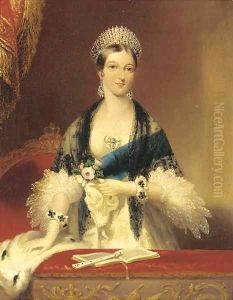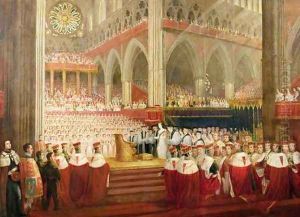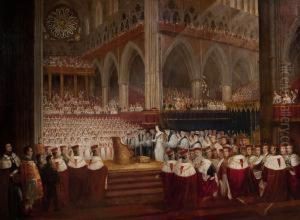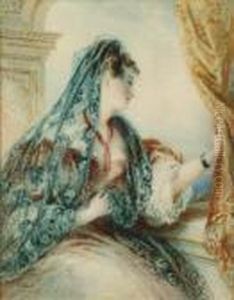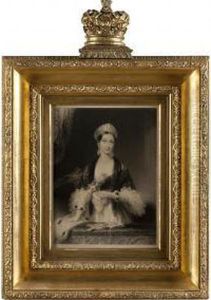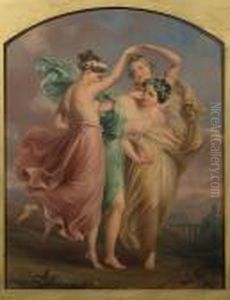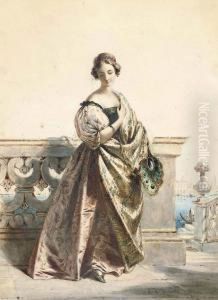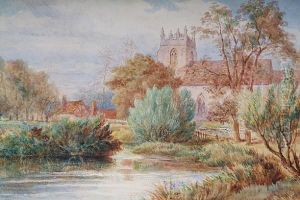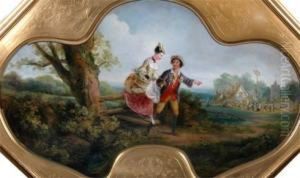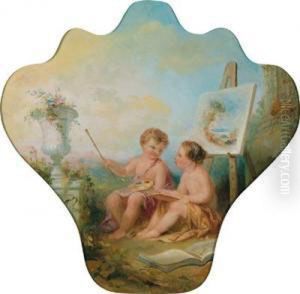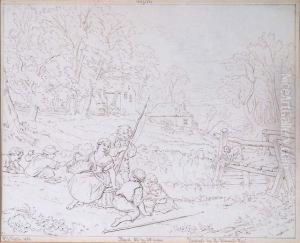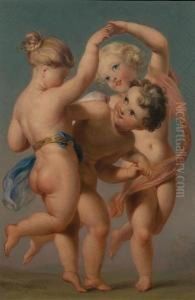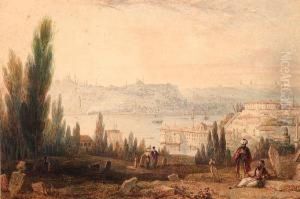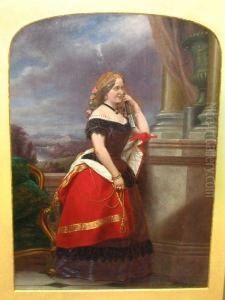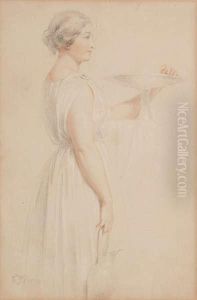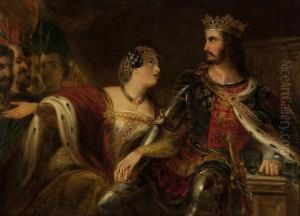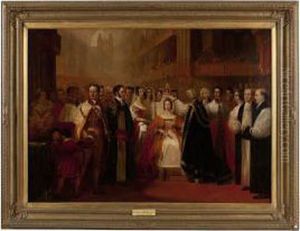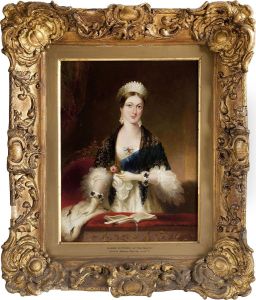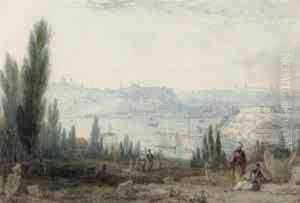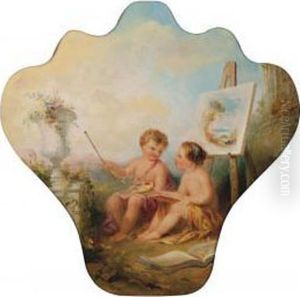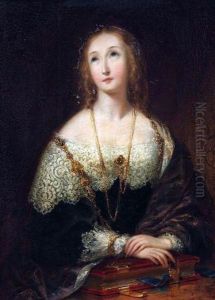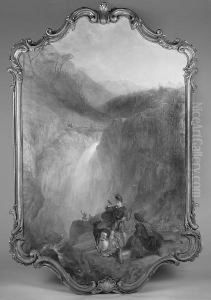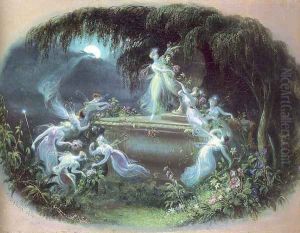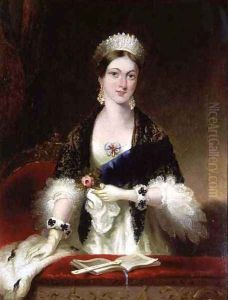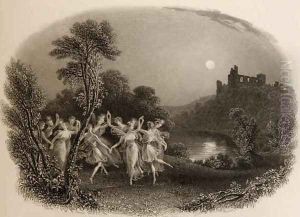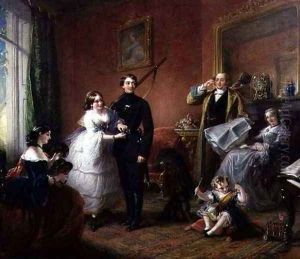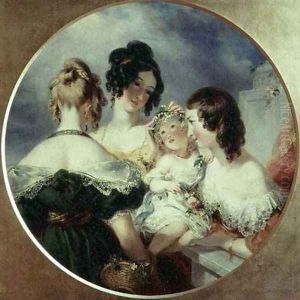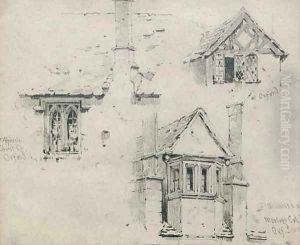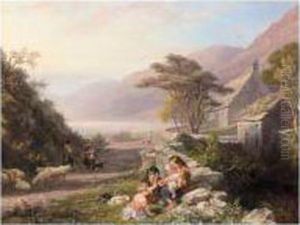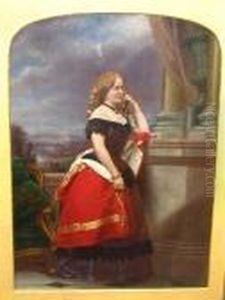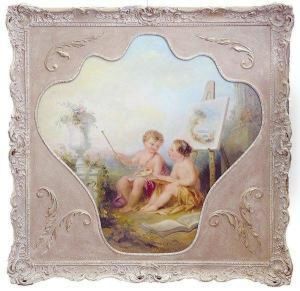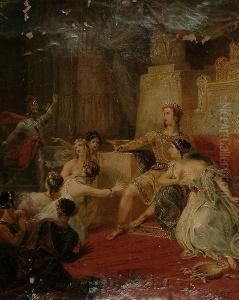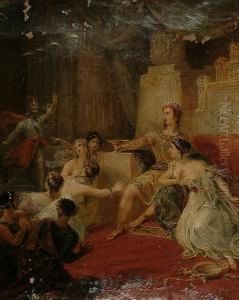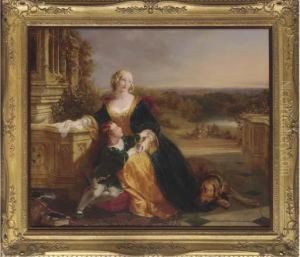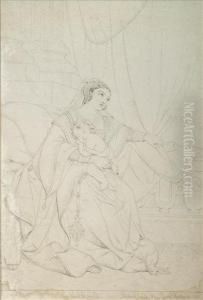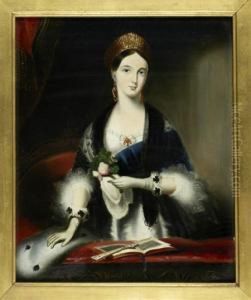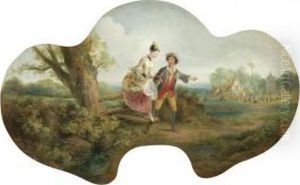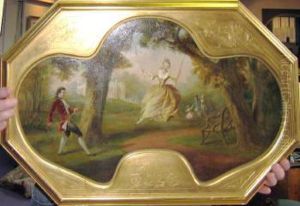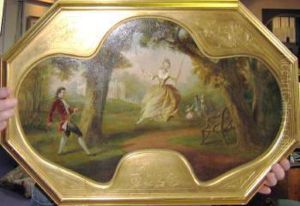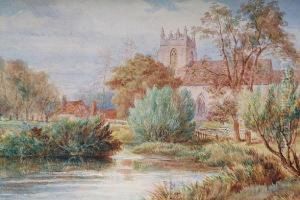Edmund Thomas Parris Paintings
Edmund Thomas Parris was a notable British historical and decorative painter. Born on June 28, 1793, in London, England, he became well-known during the 19th century for his frescoes and his work on the decoration of public buildings, as well as his historical and literary subjects.
Parris displayed an early interest in the arts and was admitted to the Royal Academy Schools in 1816, where he studied under the guidance of renowned artists of the time. He began to exhibit at the Royal Academy in 1817, which marked the start of a long-standing association. Parris’s work was influenced by the Neoclassical style prevalent during his time, as well as the Romantic movement, which began to gain popularity.
In the 1820s, Parris started to receive commissions for large-scale decorative projects. One of his significant commissions was the decoration of the Grand Staircase at Buckingham Palace, where he worked under the architect John Nash. He also contributed to the decoration of the Royal Pavilion in Brighton and was involved in the fresco decoration of the new Houses of Parliament in the 1840s, a project which was part of a wider revival of fresco painting in Britain.
Throughout his career, Parris also engaged in the painting of subject pictures, often based on literary themes such as those from works by William Shakespeare. His art was characterized by rich coloration and an attention to detail, which was appreciated in both his decorative and easel paintings.
Aside from painting, Parris was involved in other forms of artistic endeavors. He took an active role in the administration of the Royal Academy and contributed to the development of art education in Britain. He also served as the Keeper of the National Gallery in London for a period.
Parris's health began to decline in the 1860s, and he eventually retired from active work. He died on December 27, 1873, in London. Though not as widely remembered today as some of his contemporaries, Parris's work remains an important part of the study of 19th-century British art, particularly in the context of public and historical art.
